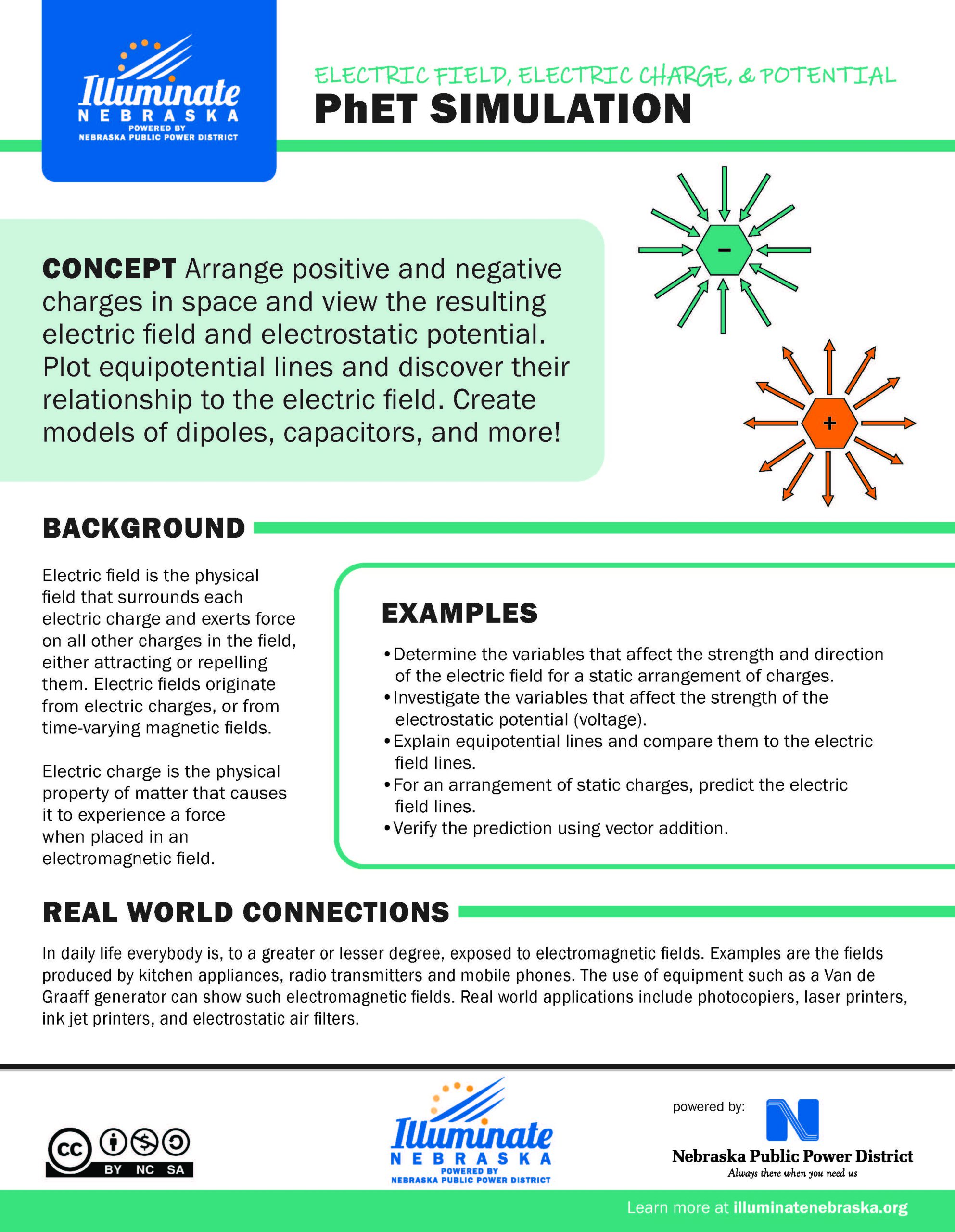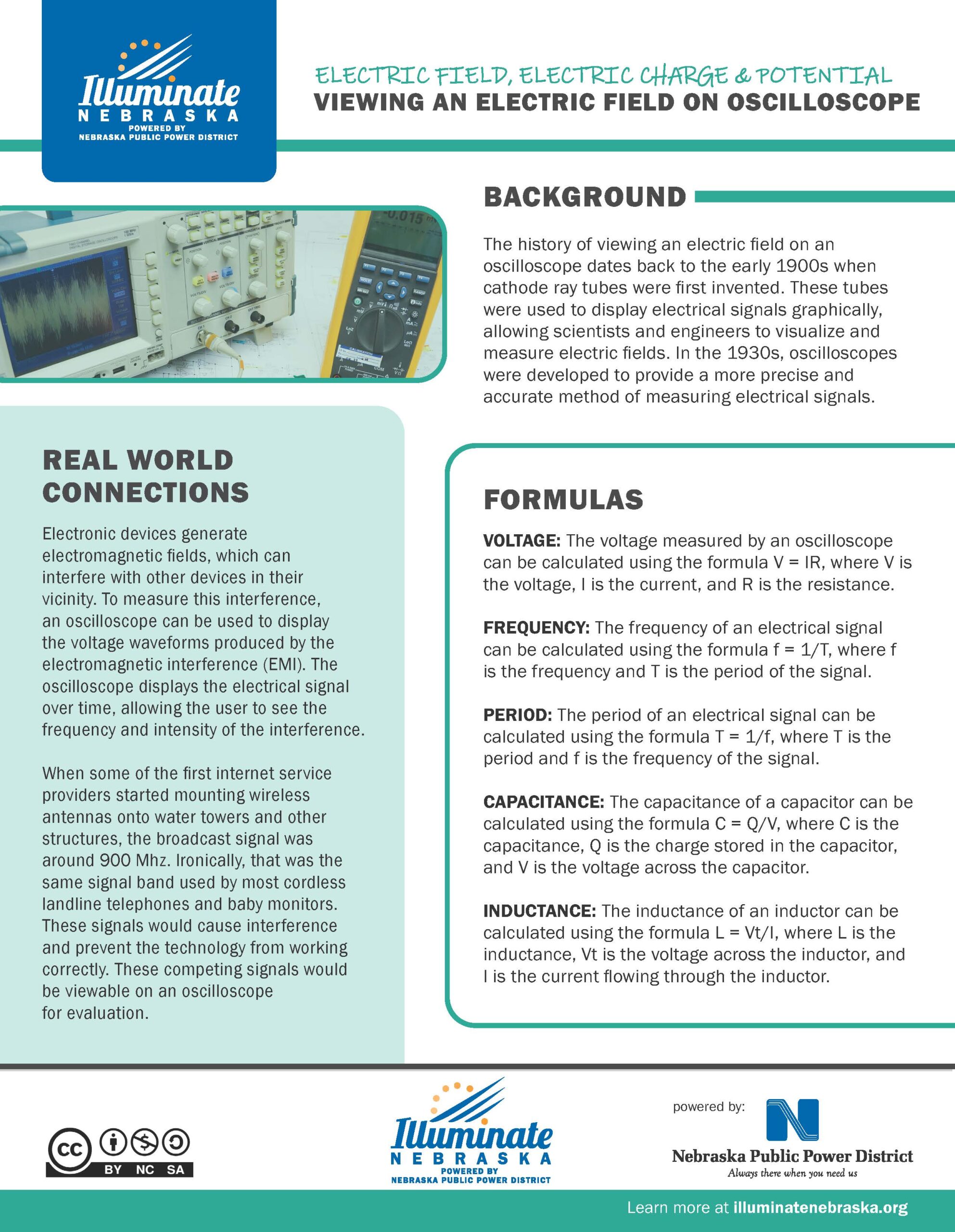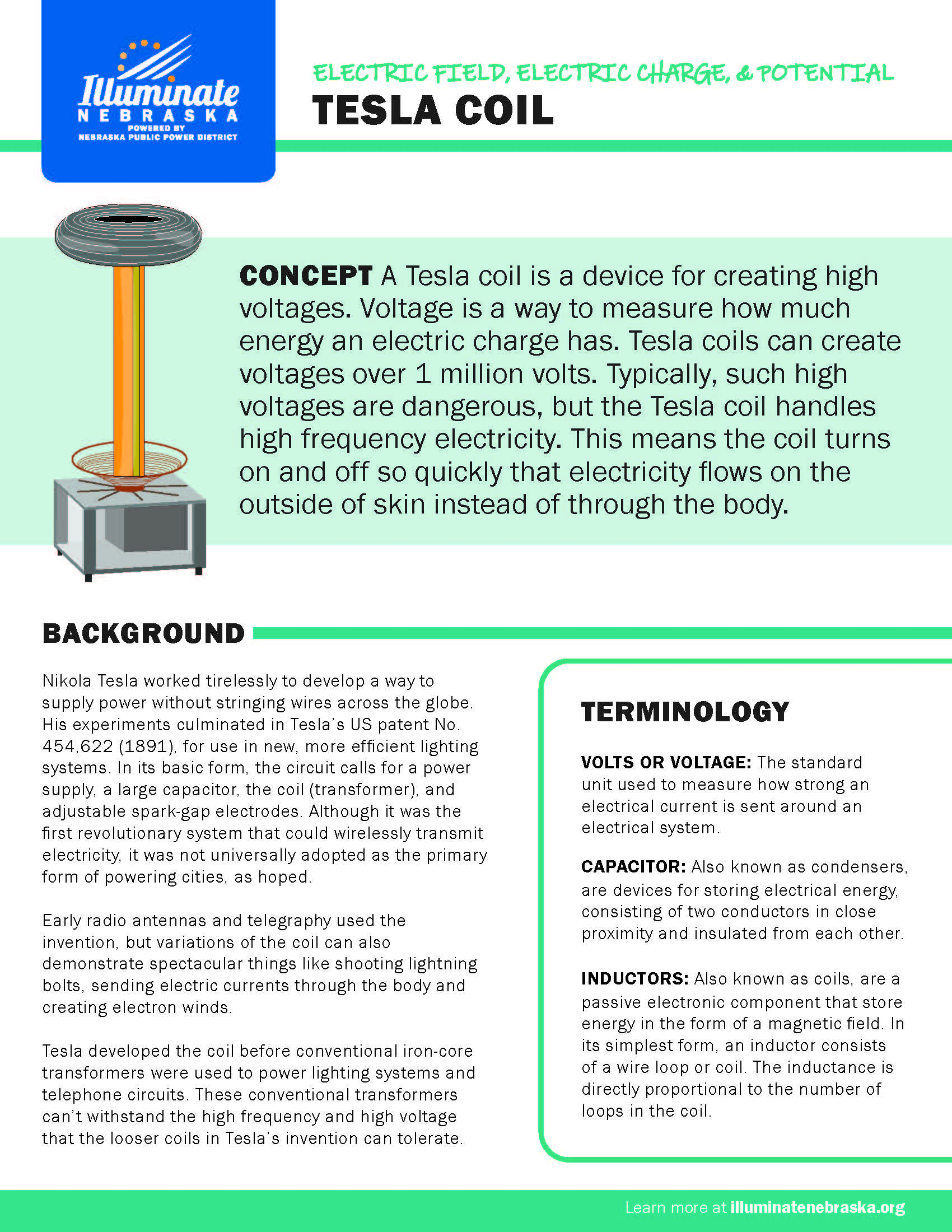PhET Simulation
Arrange positive and negative charges in space and view the resulting electric field and electrostatic potential. Plot equipotential lines and discover their relationship to the electric field. Create models of dipoles, capacitors, and more!
Viewing Electric Field on Oscilloscope
The history of viewing an electric field on an oscilloscope dates back to the early 1900s when cathode ray tubes were first invented. These tubes were used to display electrical signals graphically, allowing scientists and engineers to visualize and measure electric fields.
Tesla Coil
A Tesla coil is a device for creating high voltages. Voltage is a way to measure how much energy an electric charge has. Tesla coils can create voltages over 1 million volts. Typically, such high voltages are dangerous, but the Tesla coil handles high frequency electricity.
Theremin
The theremin is an electronic musical instrument that is not physically touched by the player. It operates using sound frequencies which are made audible by the position of the player to the instrument’s antennas.
Movement of Electric Charge
The movement of electric charges, a fundamental concept in physics, involves the flow of charged particles such as electrons and protons, driven by forces created from imbalances between positive and negative charges. Two primary forms of charge movement are static electricity, which results from charge buildup on surfaces, and current electricity, which refers to the continuous flow of charges through conductive materials.





